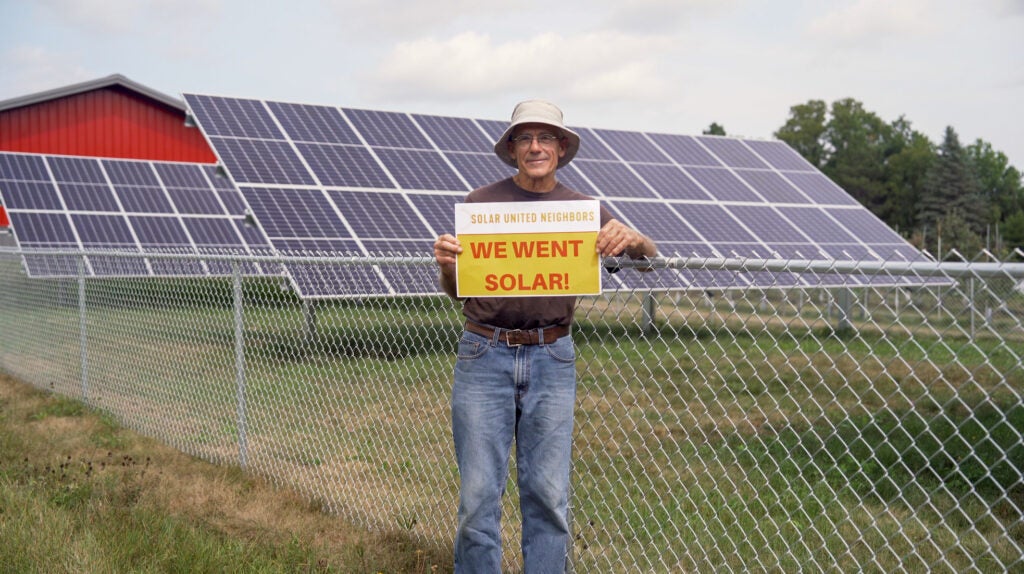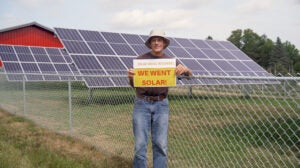How the Rural Energy for America Program (REAP) is making berry season possible

At the end of each growing season, Grand Rapids, Minnesota berry farmer Stuart Lavalier is ready for cold weather to set in, exhausted from the long hours and hard work required to grow high-quality strawberries, blueberries, cherries, and apples for local customers.
Lavalier uses the off-season to rest and recuperate, finding that “somehow over a mostly, restful winter, the excitement of another year comes back like the first warm day of spring.”
The berry grower added an additional crop recently to his family’s farm when he installed a 27.3 kW solar array. In its first year of operations, the financial benefits are clear.

“We’re seeing a negative number on our electric bill,” Lavalier said. “We don’t have a huge electricity bill but the solar covers it. . . .We’ve been getting a check back each month of about $300.”
Lavalier’s decision to add solar to his farm began a decade ago while attending a statewide growers conference. He went in thinking about finding solutions for the usual farm production challenges in the Upper Midwest: drought, insect and pest damage, changing weather patterns, hail, wind, and more.
But along with valuable production-oriented information from the conference, he was inspired by a fellow berry grower to consider a different set of issues related to his farm’s future: the option of installing solar panels.
“That grower talked about how he wanted to give back, to do what’s right, to grow more on the farm than just berries,” Lavalier said. “People at that time were saying you’re never going to get your back, you’re never going to get the payback. But he said I want to make a difference. He talked about how we need to be thinking about the future. I thought that was a good answer.”

Doing something positive for the future spoke to Lavalier, who spent 32 years teaching elementary students. Installing a solar array didn’t just impact the farm’s bottom line: it provided a way for his operation to be more self-reliant. After seeing the benefit over time, he got involved with the Iron Range Solar Co-op, organized locally by Solar United Neighbors.
When he learned about a potential federal grant that could help cover 25-50% of solar array costs, Lavalier decided the time was right to go forward. Through the U.S. Department of Agriculture’s Rural Energy for America Program (REAP), farmers and rural small businesses like Lavalier can receive grants and loans to support clean energy systems and energy efficiency projects.
Lavalier was awarded a REAP grant for his solar project, providing a substantial financial incentive to help meet his values for local, non polluting, decentralized energy production. “Once I knew I wanted to get solar on our farm, I found out about the REAP grant,” Lavalier said. “It made a difference. It made me feel comfortable going ahead, because then I knew I had that additional support to make it work.”
Lavalier, who received critical grant application and installation assistance from the local business Real Solar, hopes that his participation in REAP could help other people apply to the program. “Go ahead and go for it. There are great rebates and incentives. I’m looking forward to getting an EV (electric vehicle),” Lavalier said.
The berry farmer’s only regret is that he didn’t maximize the size of his solar array. “I kind of wish we would have went bigger,” Lavalier said.

Congress passed the Inflation Reduction Act in 2022, providing a huge boost for REAP and delivering larger grants and billions to fund thousands of projects all across rural America. Farmers and rural small businesses can learn more and apply for REAP through their state Rural Development office.
